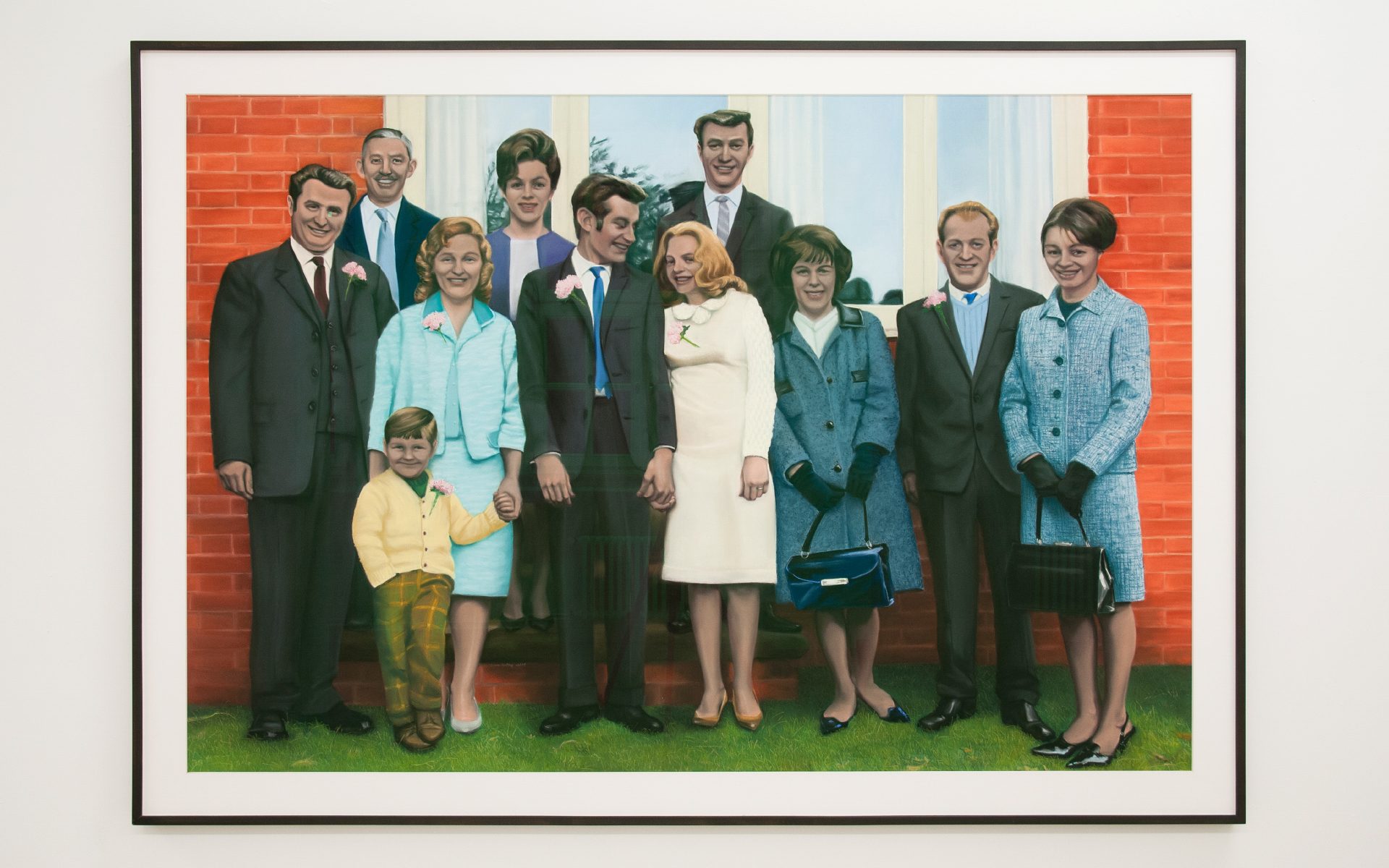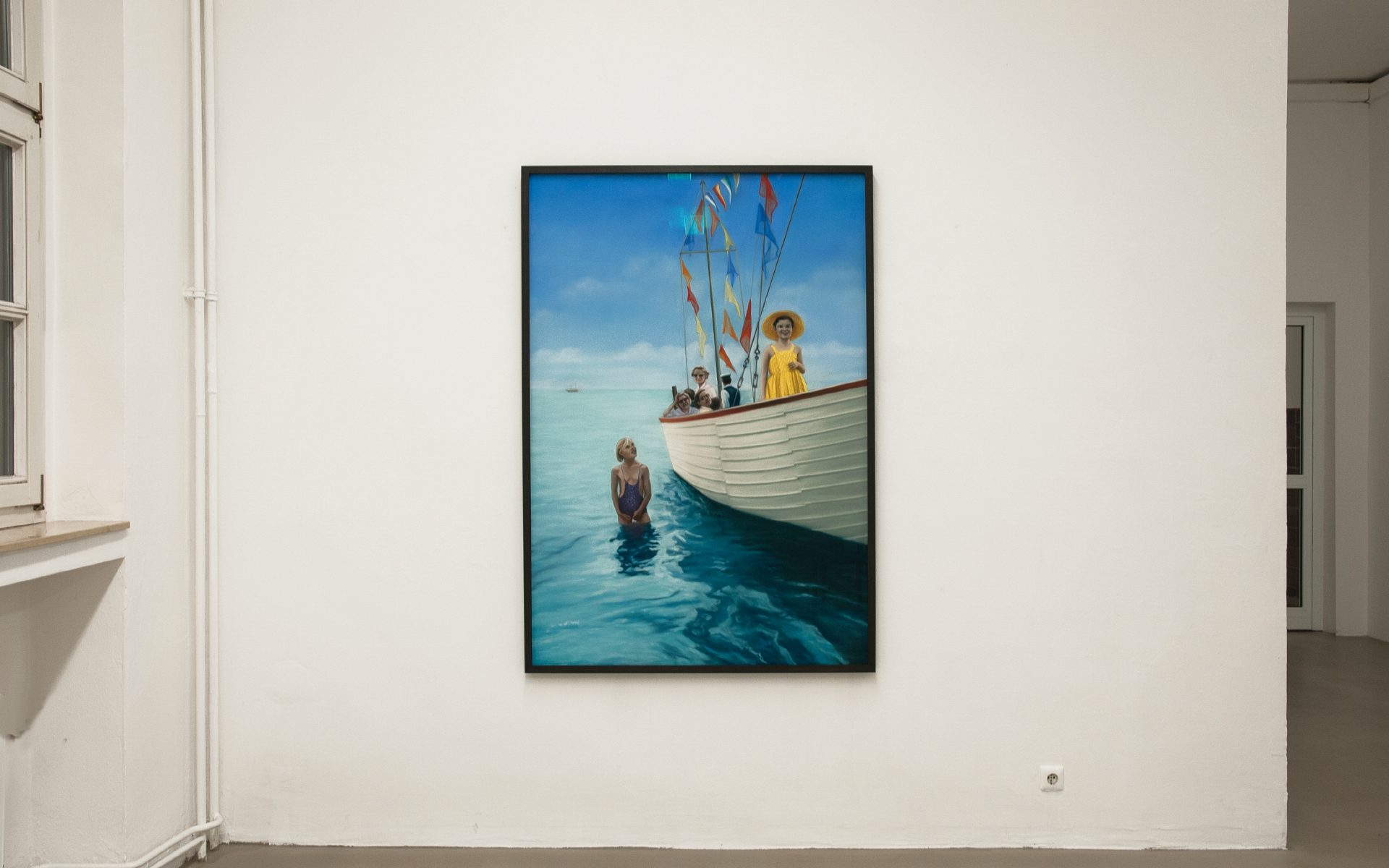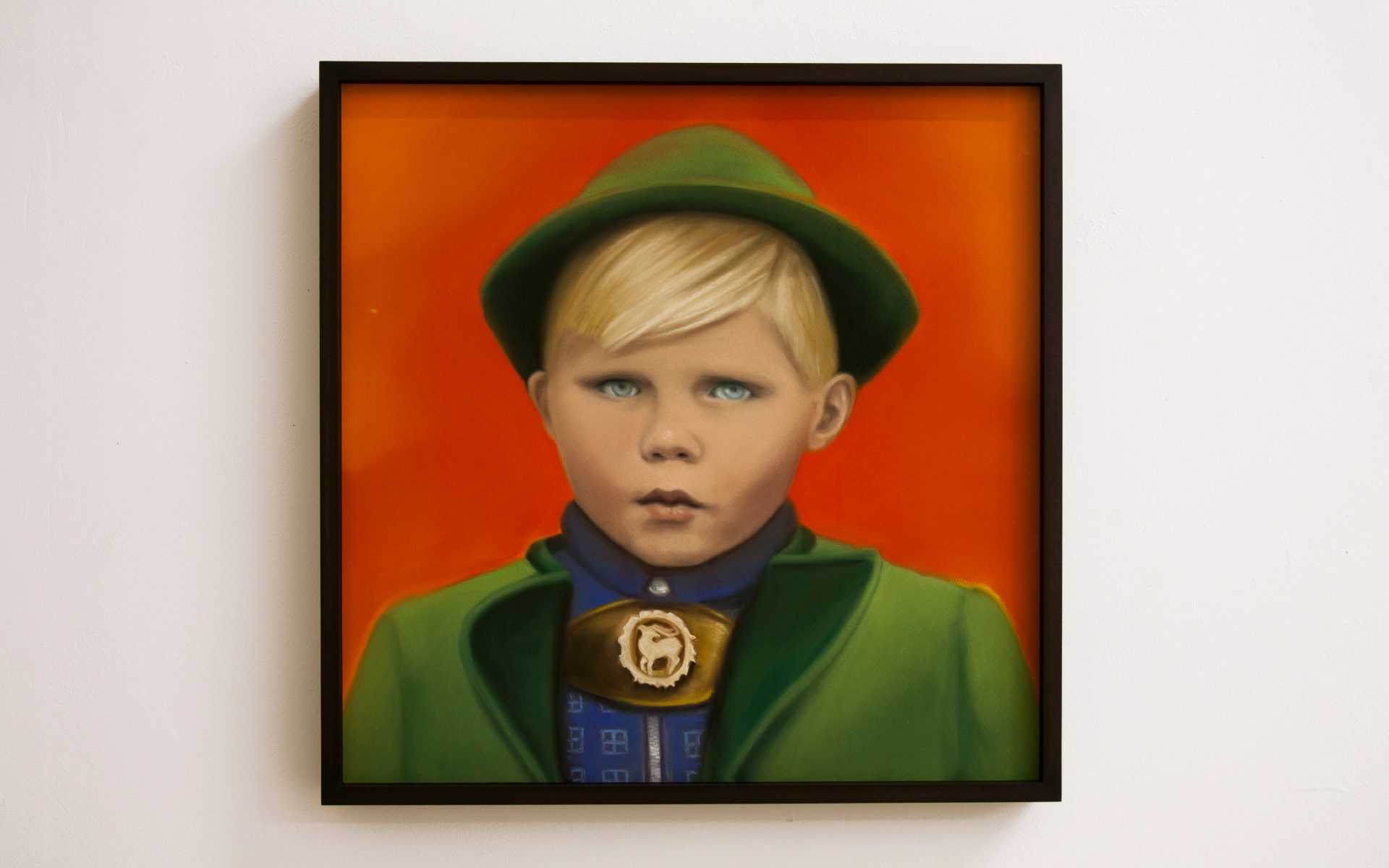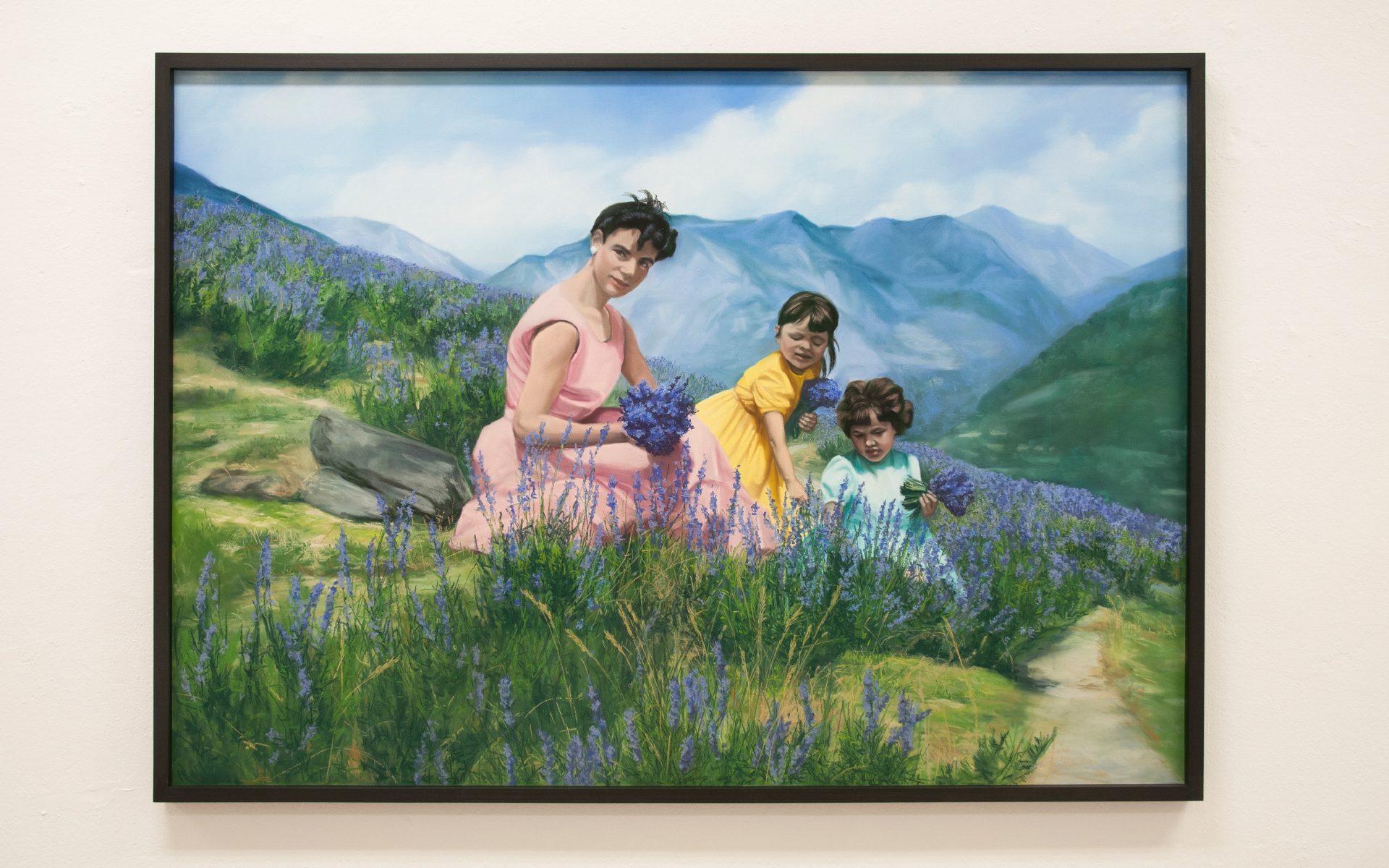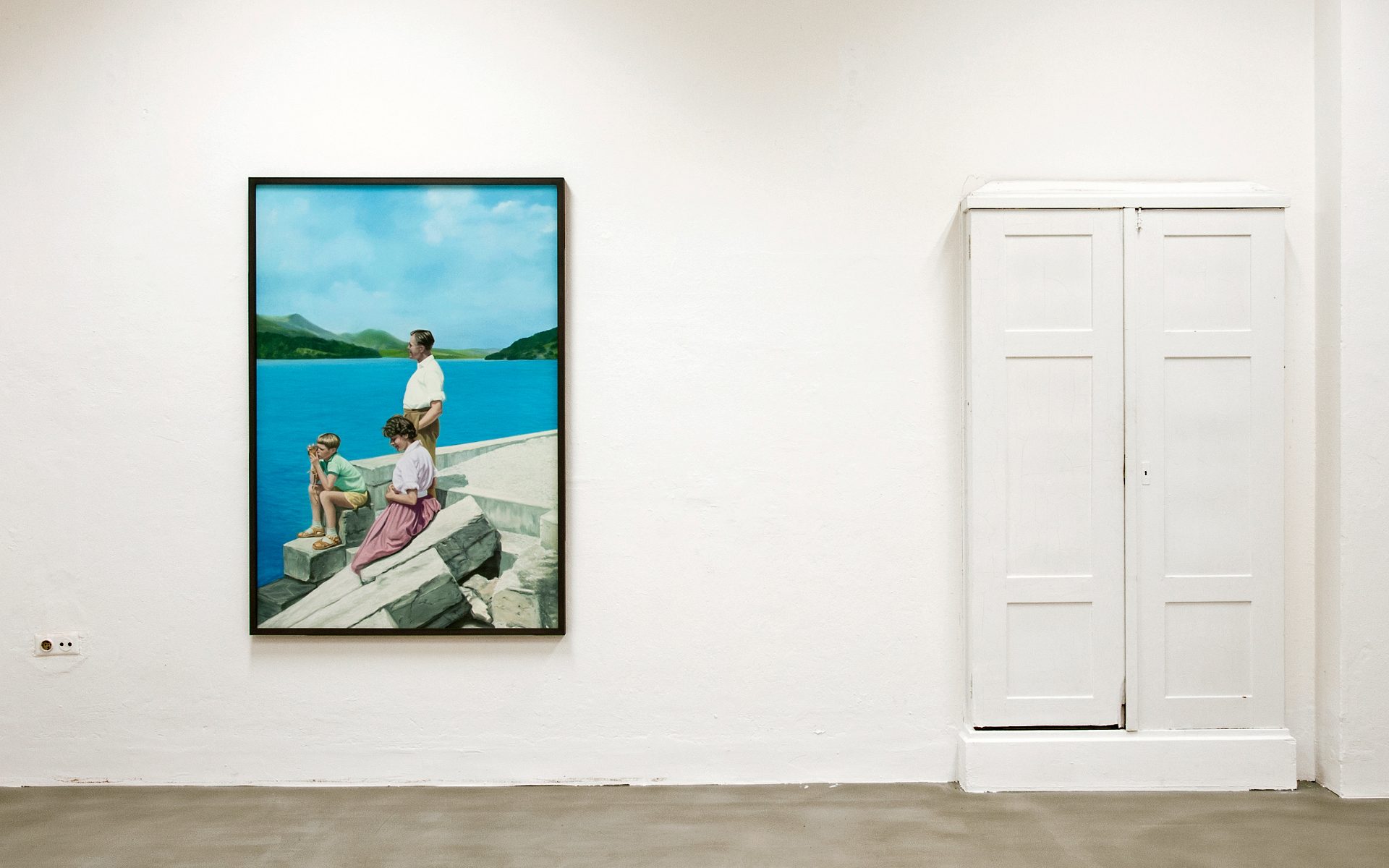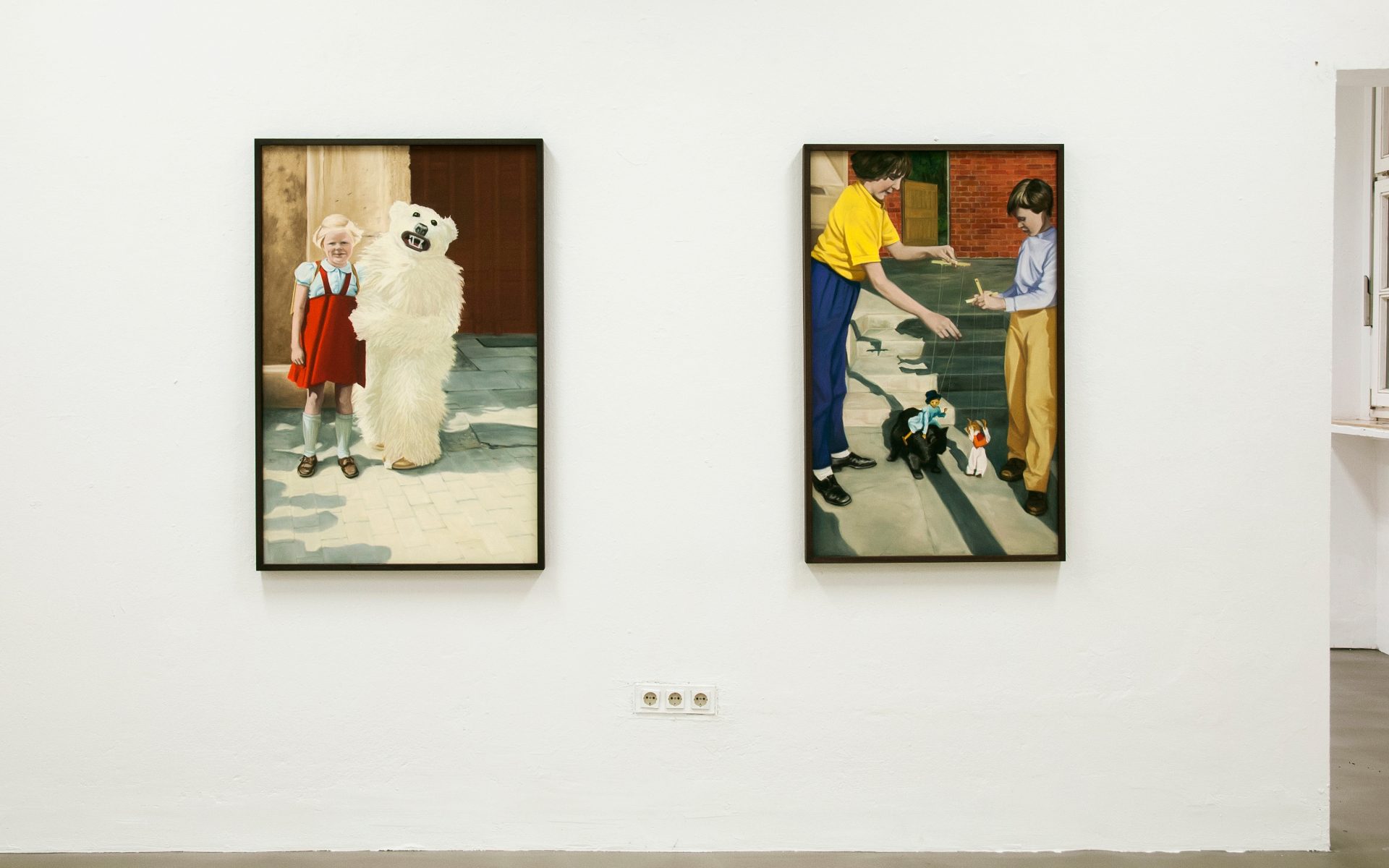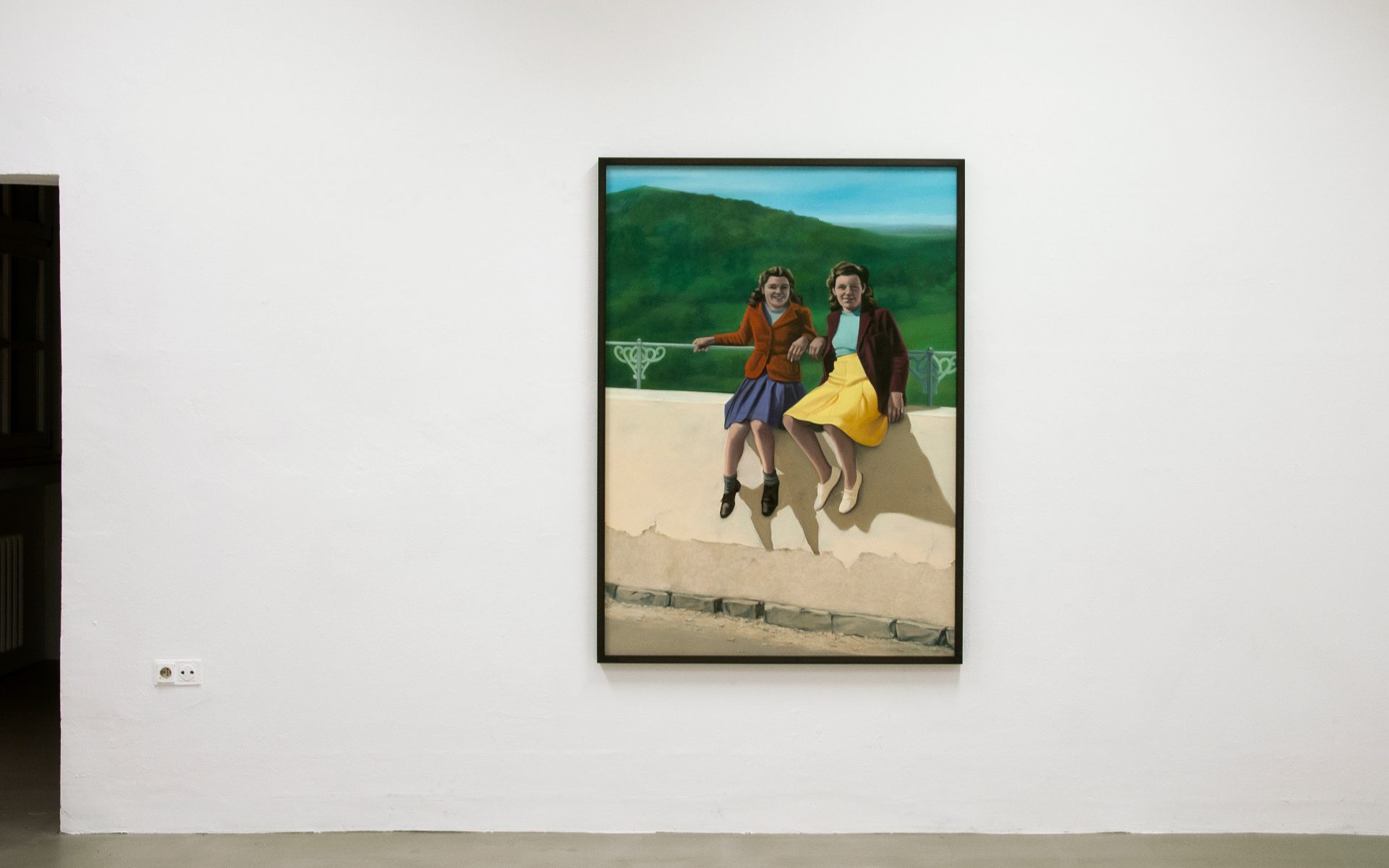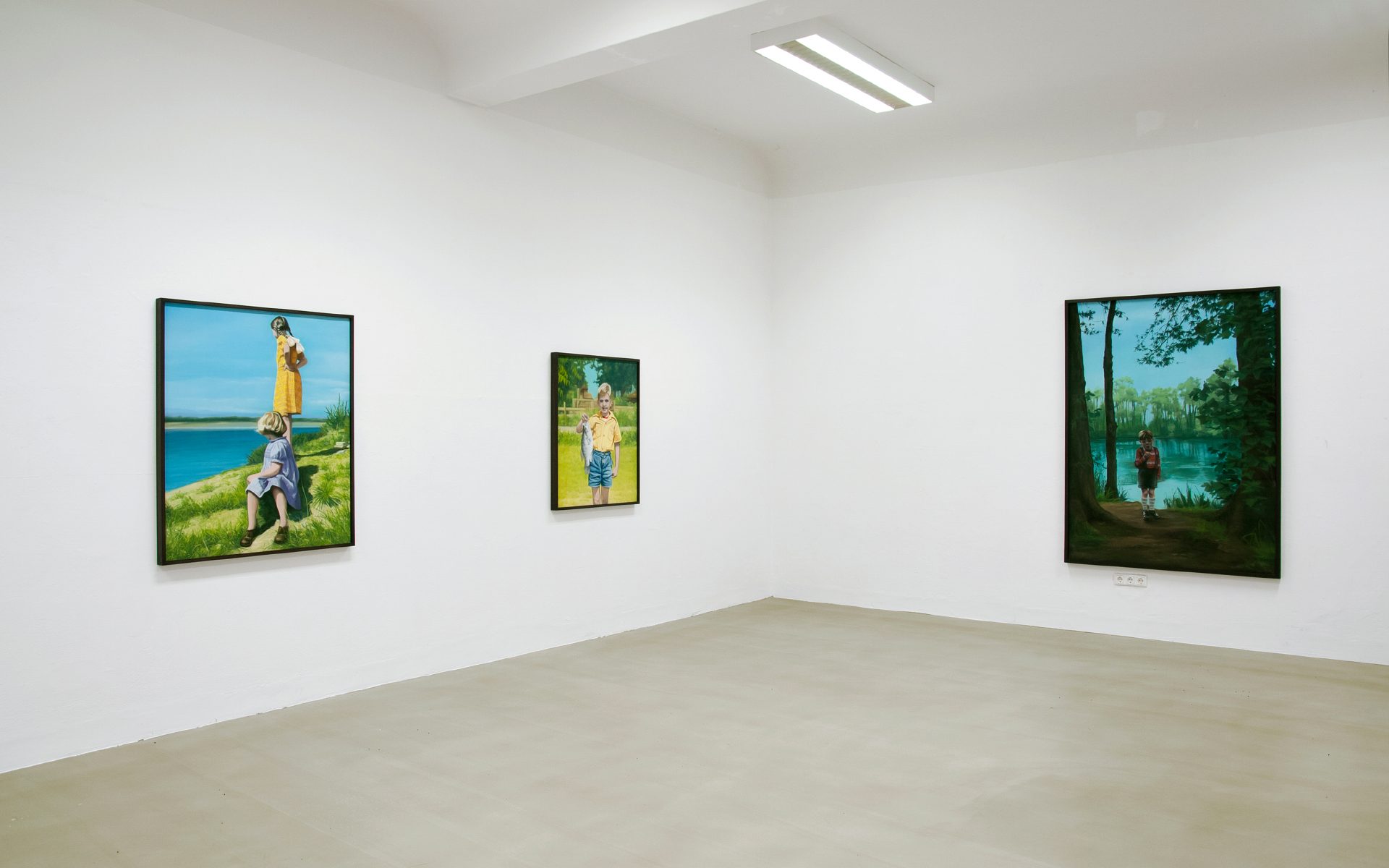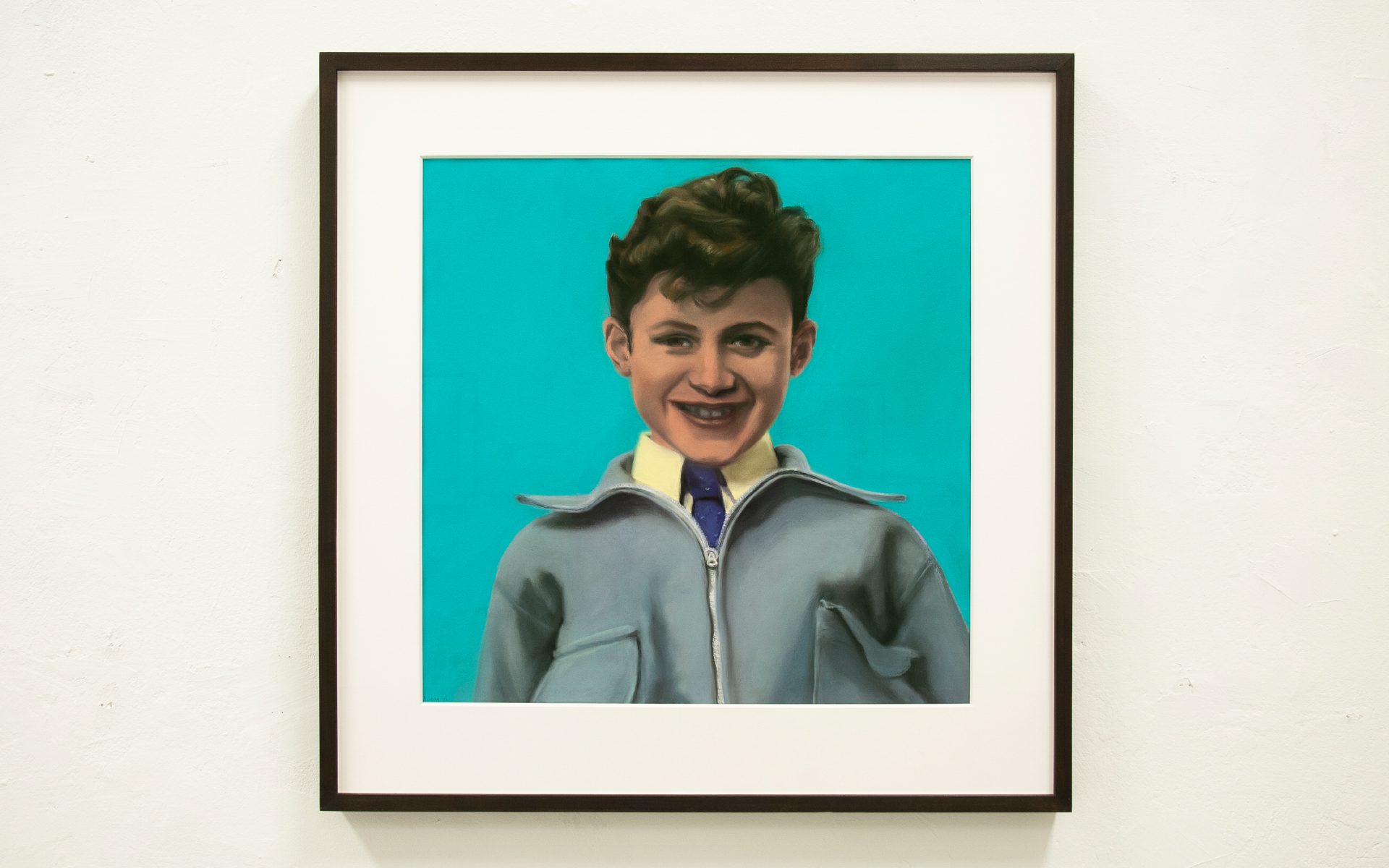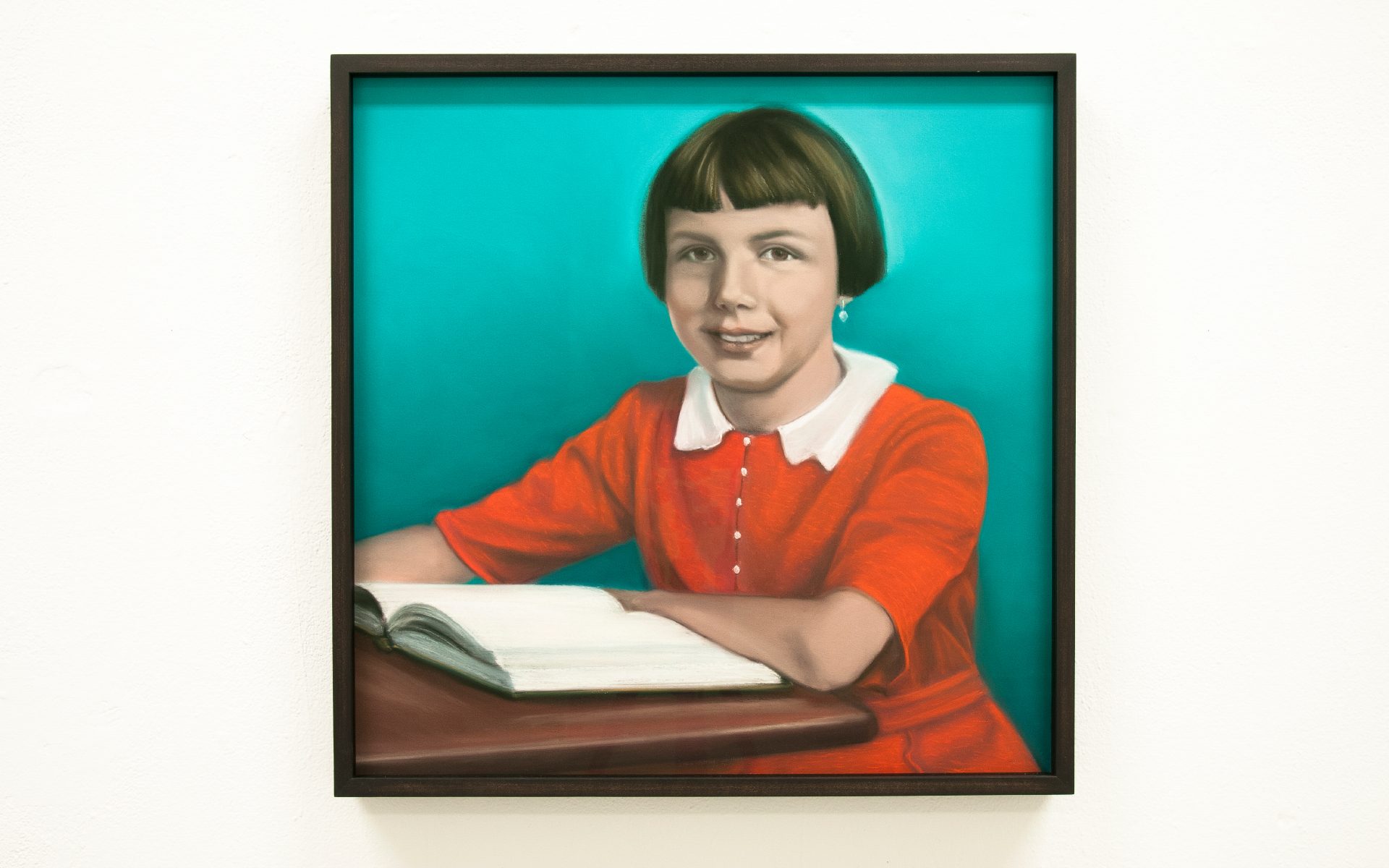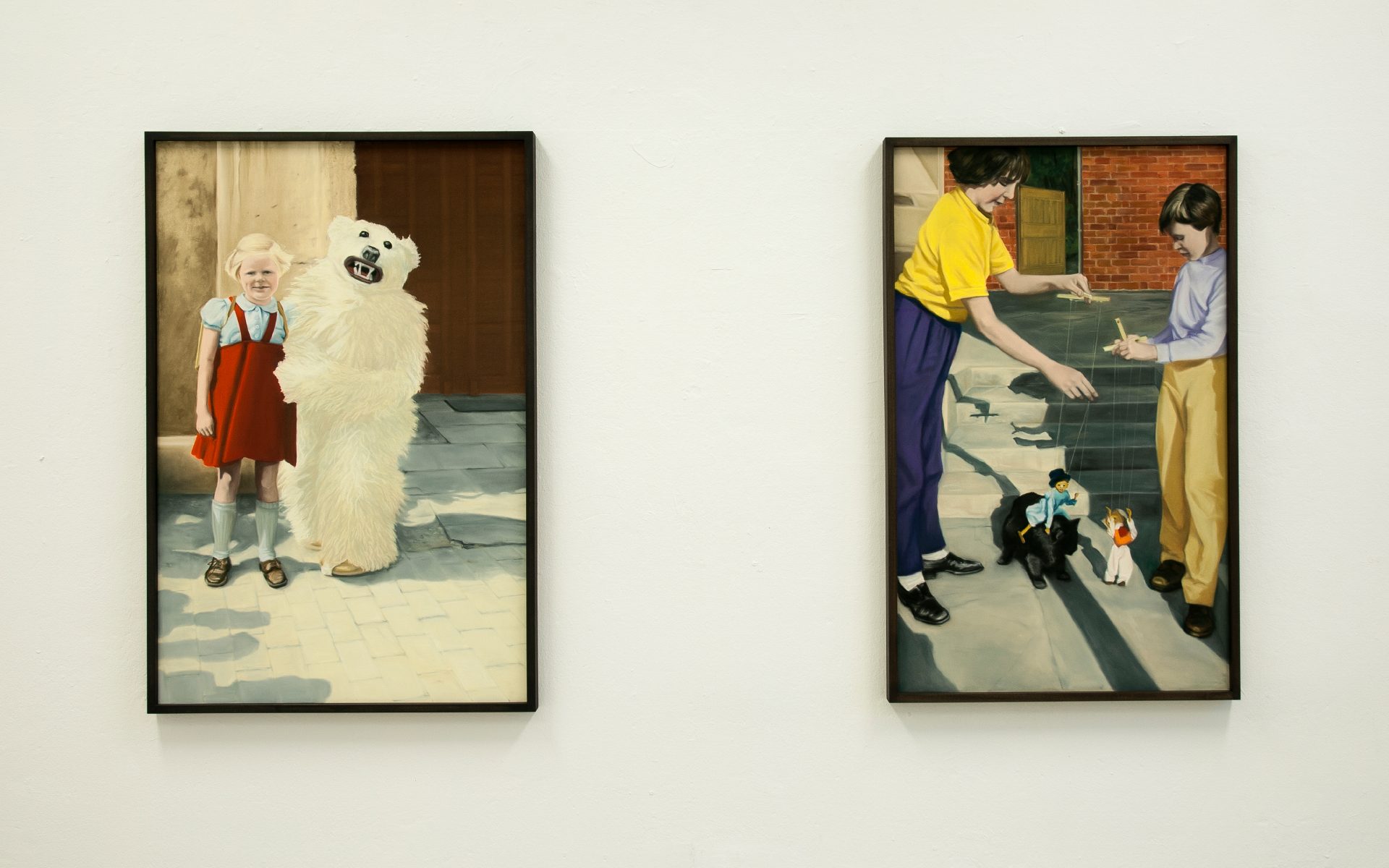Diana Rattray
Ausstellungsdauer: 13.01. – 17.02.2013
Diana Rattray wurde in Windsor/England geboren und lebt und arbeitet in Düsseldorf. Sie studierte an der Kunstakademie Düsseldorf und war Meisterschülerin von Professor Erwin Heerich.
Der Blick auf Diana Rattrays Bilder bewirkt etwas sehr Merkwürdiges. Es scheint im ersten Moment, als ob man ein altes Foto betrachtet, das einen plötzlich in eine andere Welt, eine andere Zeit, in einen anderen Kontext katapultiert. Inspirationsquellen für ihren ganz eigenen Stil, einer Mischung aus Tradition, Individualität und Objektivität, sind die 1950er und 1960er Jahre, genährt aus den schwarz-weiß Bildern englischer und deutscher Nachkriegsfotoalben.
Diana Rattray liest diese Vor-Bilder indes sehr realistisch und interpretiert sie auch so. Sie verschiebt den 50er-Jahre-Positivismus mit der notwendigen Prise Ironie, so dass er in mitunter komischen, ‚schrägen’ oder exzentrischen und verschrobenen Situationen mündet.
Die Bildwelt der Künstlerin wird von Personen bevölkert, wie sie jeder kennt: Menschen auf Familienfesten, Kinder in Sonntagskleidung, Familien bei Ausflügen. Begebenheiten, die festgehalten werden, um die Erinnerung an diesen besonderen Tag oder einen Moment jederzeit wieder abrufbar zu machen. Doch eben nicht die Idylle z.B. der Familie interessiert Rattray (…), sondern die darauf dargestellten Menschen, deren Situation hinter dem Bild und deren Schicksale nach dem Bild. Deshalb geht die Künstlerin nur von Fotomaterial aus, deren Dargestellte sie kennt und arbeitet sich an ihnen ab, wie sie sagt.
Manche der Personen in den Pastellen Diana Rattrays scheinen zu posieren. Sie halten in ihrer Beschäftigung inne, richten den Blick auf den Betrachter und setzen ein Lächeln auf, in dem Bewusstsein, dass dieses festgehalten wird. Das für diesen Zweck konditionierte Lächeln beschäftigt die Künstlerin in ihren Arbeiten. Es ist ein Lächeln, das nur an der Oberfläche stattfindet, über das Innere eines Menschen offenbart es nichts.
Auf den ersten Blick scheint es, als sei hier eine Zeit konserviert worden, in der alles noch ein bisschen geordneter, ein wenig einfacher war. Doch gleichzeitig wird dem Betrachter das Inszenierte des Dargestellten bewusst – die Künstlerin gibt durch farbliche Übersteigerung und Zuspitzung der Situationen einen Hinweis auf einen weiteren Bedeutungshorizont. Durch subtil herausgearbeitete Schattenpartien deutet sie die Gefühlswelt jenseits der sichtbaren Oberfläche an – die lächelnden Münder bekommen einen melancholischen Zug, die Gesichter etwas Starres. Die direkte Gegenüberstellung mit den Bildfiguren bewirkt, dass der Betrachter auf sich selbst zurückgeworfen wird. Als Chronistin und zugleich wache Zeitgenossin nutzt Diana Rattray die zeitliche und räumliche Distanz, um emotionale Erinnerungen zu aktualisieren.
(Galerie Bugdahn und Kaimer)
Diana Rattray
Born in Windsor, England, Diana Rattray lives and works in Düsseldorf, where she studied at the Kunstakademie and, under Erwin Heerich, received the Meisterschüler distinction.
Contemplate a Diana Rattray picture and something quite odd happens. In the first few seconds, one fancies one is looking at an old photograph and, in turn, being catapulted by it into another world, a different time, another context.
Rattray’s style is quite her own, a blend of tradition, individuality and objectivity drawing its inspiration from the 1950s and 60s as transmitted through black-and-white snaps from English and German post-war photo albums.
The artist’s own reading of this historical pictorial matrix is highly realistic and she interprets it in the same vein. With the requisite pinch of irony, however, she lends the positivism of the 1950s a twist with situations as the outcome that may be comic, awry or eccentric and quirky.
The world of Diana Rattray’s pictures is peopled by figures the types of which will be familiar to everyone – people at family celebrations, children in their Sunday best, families on day-trips – events recorded in order to have remembrance of this special day or that one moment on tap at any time.
But it is not the idyll of the family that interests Rattray. The fascination lies in the people depicted in those scenes – their situation behind the picture and their lot after the picture. That is the reason the artist limits her photographic sources to images of people she knows and, as she says, why she plies them as she does.
Some of the people in Rattray’s pastel works seem to be adopting poses. They suspend what they are doing, face the viewer and lay on a smile in the knowledge that it will be recorded. The smile conditioned for the purpose is a preoccupation in this artist’s work. It is a smile that only takes place on the surface and reveals nothing about a person’s inner being.
At first glance it seems as if these paintings preserve a time in which everything was that little bit more ordered, a little simpler. But the viewer also becomes conscious of the choreographed nature of the scene. By heightening her colouring and amplifying a situation depicted, the artist points us toward a wider scope of meaning. The subtle elaboration of areas of shadow hints at the emotional world beyond the visible surface. A melancholy trait comes to the smiling lips, and something rigid to the faces; and, finding themselves face-to-face with the figures in the pictures, viewers are thrown back upon themselves. As a chronicler and at the same time an alert contemporary, Diana Rattray makes use of the distance in time and space to reconnect emotional memory.
(Galerie Bugdahn und Kaimer)
Fotos: Stephan von Knobloch
Gefördert durch: Allbau Stiftung

